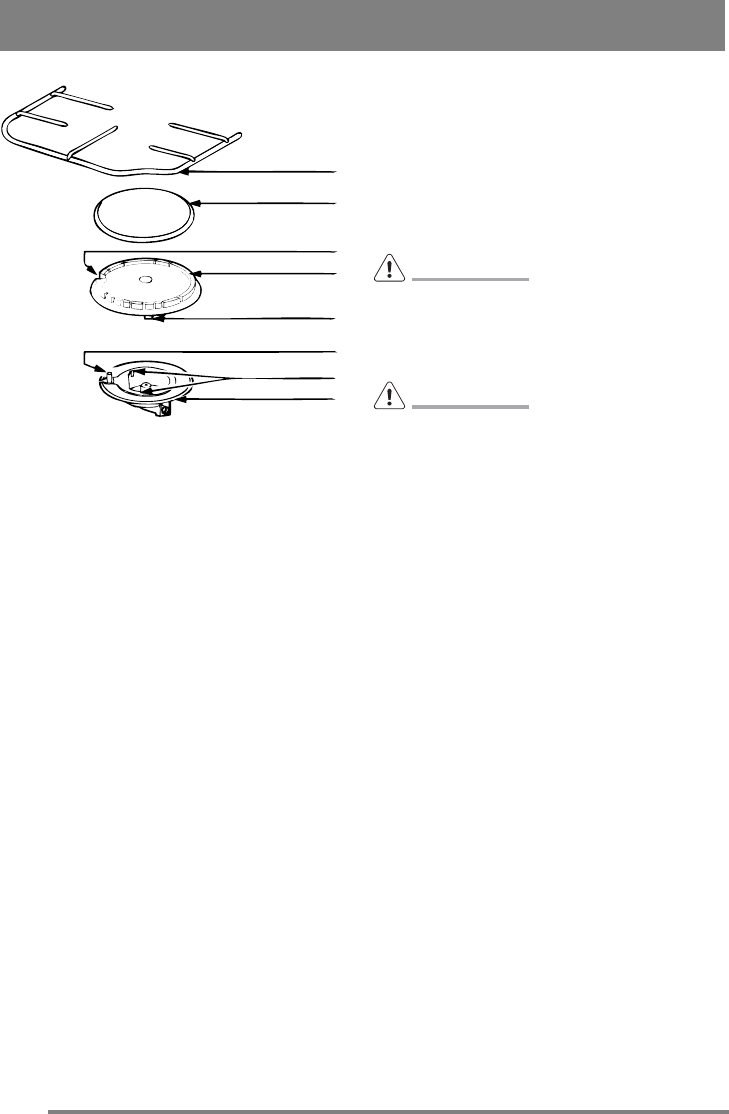
28
Pan support
Cap
Hole
Crown
Location peg
Electrode
Slots
Body
Cleaning the grill and oven
furniture
All removable parts, except the grill pan handle
can be washed in the dishwasher.
The grill pan, grill pan grid and oven shelves
may be cleaned using a soap impregnated steel
wool pad. Soaking first in hot soapy water will
make cleaning easier.
Cleaning the grill
Do not clean the grill burner itself. Cleaning the
grill may cause the holes in the burner to
become blocked preventing it from operating
correctly. Due to the nature of stainless steel the
grill burner may tarnish through use over a
period of time. This is quite normal and is not a
fault on the appliance. Clean the area around
the grill frequently using hot soapy water.
Cleaning inside the grill and
oven compartments
• The sides and back of the main oven
compartments are coated with a special
Stay-clean coating. They should not be
cleaned manually.
• The vitreous enamel main oven base and
grill/top oven compartment can be cleaned
using normal oven cleaners with care.
Ensure that the manufacturers instructions
are followed and that all parts are well rinsed
afterwards.
WARNING!
Aerosol cleaners must not come into contact
with elements, the door seal, or any painted
finishes as this may cause damage.
WARNING!
Aerosol cleaners must not be used on Stay-
clean surfaces.
• To carry out the cleaning cycle, remove the
oven shelves and set the oven to gas mark 6.
• It is a good idea to run the oven for an hour or
two per week to ensure continued good
performance from the Stay-clean finish.
• Slight discolouration and polishing of the Stay-
clean surfaces may occur in time. This does
not affect the Stay-clean properties in any way.
• Use minimal, if any, extra oil or fat when
roasting meat, potatoes only require brushing
with fat before cooking. Extra fat in the oven
during roasting will increase splashing and
staining of the cavity.
• It is not necessary to add water to a meat tin
when roasting. The water and the fat juices
from the joint create excessive splattering
during cooking – even at normal temperatures,
as well as causing condensation.
• Covering joints during cooking will also prevent
splashing onto the interior surfaces. Removing
the covering for the last 20-30 minutes will
allow extra browning if required. Some large
joints and turkeys especially benefit by this
method of cooking, allowing the joint to cook
through before the outside is over-browned.


















